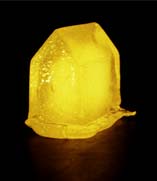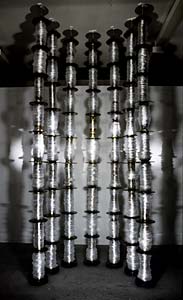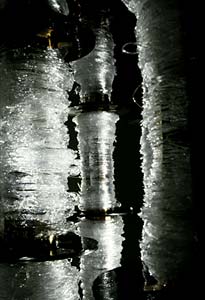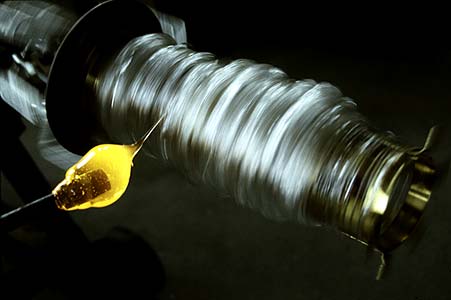 |
|
 |
|
| Undergraduate Work |
| The Man's Nest the Woman's Cage | Kali's Thorax - Glass Corset | Threads of Life | |||||||
 |
 |
 |
 |
 |
 |
 |
|||
| Scroll right
to view the photos. Click on images for captions and a larger view. In the performance, The Man’s Nest a Woman’s Cage, I used the crinoline as a metaphor of the entrapment of fashion ideals women and men are subjected to. The female "fashion victim" trapped inside the crinoline was spinning it around her body, as three male (macho) glassblowers continued to apply hot glass to the crinoline. The glass got pulled into a thin thread, the same process as spinning wool, thus wrapping the woman in hot glass.The crinoline structure and a bucket she was standing inside, protected her from getting burnt by the hot glass. Glass blowing has often been described as mesmerizing to watch, and the precise, repeated movements have been compared to a choreographed dance. In the show the crinoline was exhibited "finished," covered with glass thread, most of it applied after the performance. Next to the crinoline a video showed the performance, edited in a endless loop, to music of Philip Glass. Also in Kali's Thorax - Glass Corset I made a garment to speak of the torment and pain, mainly women suffer, while adhering to the trends of fashion. The corset - made from one piece of glass - was blown into a negative body cast, cut into four pieces, drilled and laced together. It is displayed hanging, enabling the viewers to look inside and grasp the size of the body squeezed into the corset. Exhibited next to the corset are life-size black and white photographs, of a woman wearing the corset. The transparent glass reveals how the corset cuts and compresses the flesh as a Victorian bone corset would have done. Threads of Life is a imaginary
storage of life-threads made from glass spun onto large spools.
The 63 spools in the exhibition are stacked from floor to ceiling,
with the intention to create a feeling of plenty and the rows of
spools are placed in a half circle, as to surround the viewer. The
title refers to three sisters featured in Nordic Mythology, spinning
the "threads of life," and dictating the life of humans
and Gods and determine when everybody will live and die. The spools
took about three weeks to complete as I walked back and forward
from the furnace, adding small bits of glass, to make a spool representing
someone’s life. Each spool ended up looking distinct, with
different amounts of glass added in various places. The installation
speaks of the uniqueness of each life in the endless cycle of life
and death. |
|
| © Anna Viktoria Norberg 2010 |
